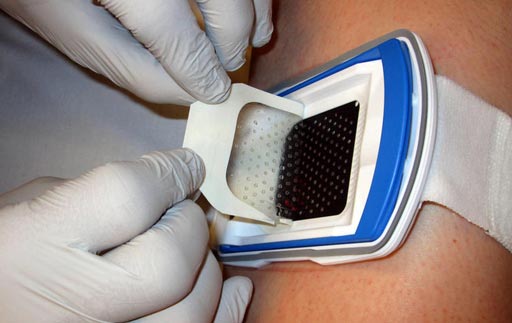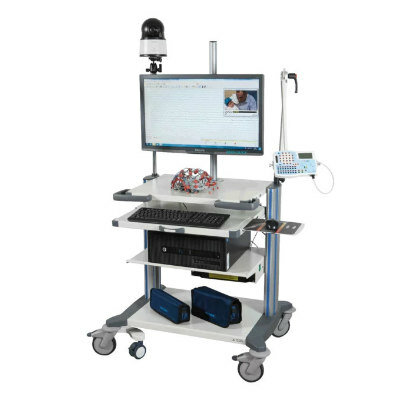Epidermal Autograft Harvester Aids Chronic Wound Recovery
By HospiMedica International staff writers
Posted on 14 Feb 2017
A new skin-graft harvesting system aids in the treatment of chronic wounds and reduces care costs by accelerating the healing process.Posted on 14 Feb 2017
The Acelity CelluTome Epidermal Harvesting System offers a minimally invasive epidermal grafting technique that creates minimal donor site damage and scarring, provides increased expansion ratios, and can be performed easily and in a relatively pain-free manner in the outpatient setting. The resultant epidermal graft can help to reduce healing time in both chronic and small acute wounds, with a potentially significant impact on the overall cost of chronic wound care.

Image: The CelluTome Epidermal Harvesting System (Photo courtesy of Acelity).
The device works by creating multiple suction-induced epidermal blisters between two stainless steel plates with an array of 1.75-mm holes by using a constant negative pressure of 400-500 mmHg at a temperature of 37° to 41° C. The suction blisters develop inside the disposable harvester, with more than 128 blisters created over an area of 25 cm2 of donor skin. An integrated cutter blade is then used to separate the blisters, which are peeled away with a transparent dressing and applied over the recipient site.
In a study conducted at the University of Missouri Healthcare System that involved 13 patients with various types of chronic wounds, the CelluTome Epidermal Harvesting System grafts resulted in healing rates of 62%; eight of the 13 patients healed within four months, two were lost to follow-up, and three had wounds that remained open. In fact, four of the patients healed in less than one month. In addition, the comparatively rapid closure of the open wounds also reduced health care costs by an average of USD 1,153 per patient.
“Chronic wounds occur when healing fails to progress normally and persists for more than 30 days. Current treatments such as moist dressings, frequent irrigations, and wound cleaning are not always enough to ensure that healing occurs in high-risk patients,” said lead author Jeffrey Litt, DO. “Although a skin graft can be used to close a wound that refuses to heal, the surgical technique usually is painful, time-consuming and leaves significant donor site wounds.”
There are two types of skin grafts; a full thickness skin graft that consists of the epidermis and the entire thickness of the dermis, and a split-thickness skin graft that includes the epidermis and part of the dermis. Split-thickness grafts are frequently used as they can cover large areas and the rate of auto-rejection is low. The donor site heals by re-epithelialization from the dermis and surrounding skin and requires dressings.














